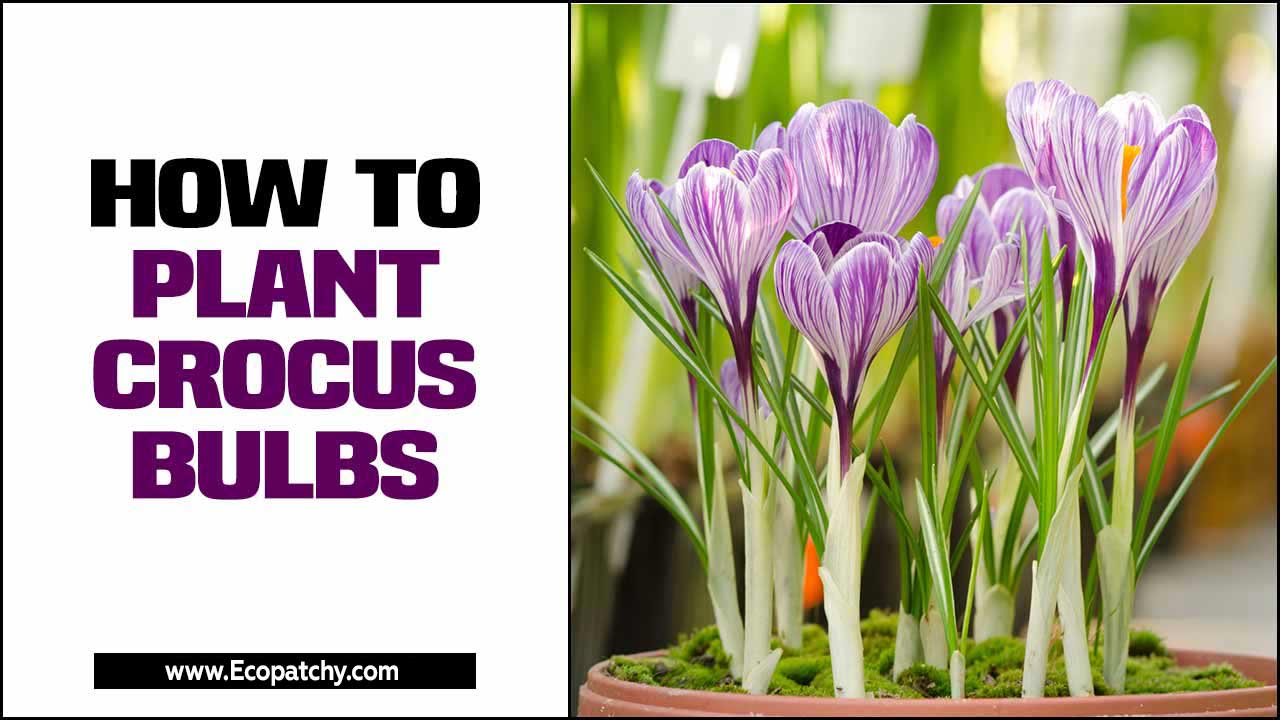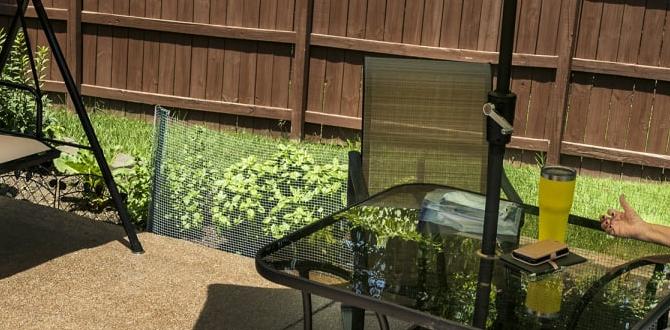For safe and stylish interior stairs, choose the right rails for stairs indoors by considering material, design, and proper installation. This guide makes selecting and understanding your ideal stair rail simple.
Navigating your home should feel safe and effortless, especially on your indoor stairs. But sometimes, those stairs can feel a bit wobbly or less secure than we’d like. This is where the clever design of rails for stairs indoors comes in! They aren’t just for fancy homes; they’re a crucial part of making your stairways functional and even beautiful. Don’t worry if you’re new to this; it’s easier than you think to find the perfect fit for your home.
In this guide, we’ll walk through everything you need to know about rails for stairs indoors. We’ll cover the different types, how to pick the best materials, and what makes for a truly great design, all in a way that’s easy to understand. Get ready to make your stairs a safe and stylish pathway in your home!
Why Proper Rails for Stairs Indoors Matter
Think of rails for stairs indoors as the trusty companions for your journey up and down. They’re not just there to look pretty, though they certainly can! Their primary job is safety. For families with young children, older adults, or anyone who might need a steadying hand, secure railings are a must-have. They prevent slips and falls, making everyday movement much more secure.
Beyond safety, well-designed railings significantly contribute to the overall aesthetic of your home. They can be a focal point, adding character and style to your entryway or hallway. From sleek modern designs to more classic looks, the right choice can elevate your interior décor. Plus, they actually help define the space, making your staircase feel like a cohesive part of your home’s architecture.
Key Design Considerations for Rails for Stairs Indoors
When you’re thinking about rails for stairs indoors, there are a few important things to keep in mind. It’s about balancing how they look with how they function. Let’s explore the essential design aspects:
1. Safety First: Building Codes and Ergonomics
The most crucial aspect of any rail design is safety. This means adhering to building codes, which are established to ensure your safety. These codes specify things like the height of the railing, how far apart the balusters (the vertical posts supporting the handrail) should be, and the strength of the materials used.
In the United States, the International Residential Code (IRC) provides these guidelines. For example, it often mandates that handrails be between 34 and 38 inches from the tread nosing (the front edge of the step). Balusters typically need to be spaced so that a 4-inch sphere cannot pass through them, preventing small children from falling through. Always check your local building codes, as they can vary.
Ergonomics is also key. The handrail should be comfortable to grip. For most people, this means a round or oval shape that’s easy to hold. The diameter is important, often specified in codes as well, typically between 1.25 and 2 inches. This ensures a good grip for a wide range of hand sizes.
2. Material Choices: Durability Meets Style
The material you choose for your rails for stairs indoors will impact its look, feel, durability, and cost. Here are some popular options:
- Wood: A classic choice, wood offers warmth and versatility. It can be painted, stained, or left natural to match various decor styles. Hardwoods like oak, maple, or cherry are durable and look beautiful. Pine is a more budget-friendly option but can be softer.
- Metal: Metals like wrought iron, steel, or aluminum offer a modern or industrial aesthetic. They are incredibly strong and can be fashioned into intricate designs (wrought iron) or sleek, minimalist lines (steel, aluminum). Powder coating can prevent rust and offer a range of colors.
- Glass: For a truly contemporary and airy feel, glass panels combined with metal or wood supports are a stunning option. They create a seamless look and don’t obstruct views. Tempered glass is used for safety and is very strong.
- Cable or Rod Systems: These involve horizontal cables or vertical rods, often paired with minimalist posts. They offer an open, industrial, or modern vibe and work well in contemporary spaces where you want to maintain an unobstructed view.
Consider maintenance too. Wood may need occasional refinishing, while metal might require touch-ups if scratched. Glass needs regular cleaning to maintain its sparkle.
3. Style and Aesthetics: Harmonizing with Your Home
Your rails for stairs indoors should complement your home’s existing style. Think about the overall look you’re going for:
- Traditional: Carved wooden details, ornate wrought iron, or classic turned balusters fit a traditional aesthetic.
- Modern: Clean lines, minimalist metal posts, glass panels, or simple wood handrails in straight geometric shapes are hallmarks of modern design.
- Rustic/Farmhouse: Reclaimed wood, rough-hewn timbers, or simple black metal spindles can evoke a rustic or farmhouse feel.
- Industrial: Exposed metal pipes, raw steel, or simple, sturdy designs with minimal ornamentation define an industrial look.
Don’t forget the connection between the handrail and the balustrade (the entire structure of the railing, including posts and infill). They should work together seamlessly to create a cohesive design.
4. Handrail Placement and Continuity
The handrail should be continuous and easy to grasp. This means it shouldn’t have any breaks or sharp turns that make it difficult to follow. Codes often require handrails on at least one side of stairs that are 36 inches or wider, and on both sides if the stairs are 44 inches or wider. For spiral staircases, a continuous handrail is especially important.
The rail should extend horizontally beyond the top and bottom of the stairs. Typically, it should extend at least 12 inches at the top landing and at least the depth of one tread at the bottom. This provides support as you transition off or onto the stairs.
5. Baluster Spacing and Infill Options
The infill, which is what goes between the handrail and the floor, plays a big role in safety and style. The most common types are balusters or spindles.
Baluster Spacing: As mentioned, codes usually require baluster spacing to be no more than 4 inches apart to prevent small children from getting stuck. This is a crucial safety feature to prioritize.
Infill Options:
- Vertical Balusters: The most traditional type. They can be simple dowels, turned spindles, or more decorative shapes.
- Horizontal Balusters: Offer a modern, linear look but need careful consideration regarding code compliance, as they can sometimes pose a climbing hazard.
- Picket Balusters: Similar to vertical balusters but often smaller and more numerous.
- Panels: These can be solid panels (wood, metal) or open designs like cable or rod infills.
- Glass Panels: Create an open, luxurious feel. They are usually mounted with clamps or channels and rely on strong support posts.
Popular Styles and Design Ideas for Rails for Stairs Indoors
Let’s explore some popular styles that homeowners love, mixing function with fantastic form:
Modern Minimalist with Metal and Glass
This style is all about clean lines and an open feel. Think sleek, brushed stainless steel or black metal posts supporting a simple, flat handrail. Between the posts, you might find clear tempered glass panels. This creates an almost invisible barrier that maximizes light and space, perfect for contemporary homes.
Pros: Chic, airy, modern, durable.
Cons: Can be more expensive, glass requires regular cleaning, metal can be cold to touch.
Classic Wood Charm
Nothing beats the warmth and timeless appeal of wood. A well-crafted wooden handrail, perhaps with turned balusters or simple square posts, can grace any home. You can opt for a rich stain that highlights the wood’s natural beauty or a crisp white or bold color paint to match your décor. This style is versatile and always inviting.
Pros: Warm, natural, customizable (stain/paint), relatively affordable.
Cons: Can scratch or dent, may require refinishing over time.
Industrial Chic with Pipe or Cable
For a loft-like or industrial vibe, consider using materials like galvanized steel pipes or a cable railing system. Pipe railings can be made from actual plumbing pipes, offering a raw, edgy look. Cable railings use taut steel cables strung horizontally between posts, providing an open, airy, and modern feel while still offering excellent safety.
Pros: Unique, durable, modern/industrial look, good for open views.
Cons: Cables can be tricky to tension correctly, pipe can feel industrial rather than cozy, potential code issues with horizontal elements depending on spacing.
Wrought Iron Elegance
Wrought iron offers intricate designs and a touch of old-world charm. Scrollwork, floral motifs, or geometric patterns can be incorporated into the balusters or as decorative elements along the handrail. This style adds a sophisticated and timeless flair, especially to homes with a more traditional or Victorian feel.
Pros: Beautiful craftsmanship, durable, unique designs, adds a classic touch.
Cons: Can be very expensive, heavy, requires skilled installation.
DIY vs. Professional Installation: Which is Right for You?
Deciding whether to tackle the installation yourself or hire a professional is a big step. It depends on your skill level, the complexity of the project, and your budget.
DIY Installation: Things to Consider
If you’re handy and have some experience with home improvement projects, a DIY installation might be feasible, especially for simpler wood railings. However, for more complex systems like glass or intricate metalwork, it becomes much harder.
- Tools: You’ll need a good set of tools, including a saw, drill, level, tape measure, and possibly specialized tools for metal or glass.
- Materials: Ordering pre-made railing kits can simplify the process.
- Building Codes: You must understand and comply with local building codes. Incorrect installation can be a serious safety hazard.
- Time Commitment: DIY projects often take longer than expected.
- Risk: Mistakes can lead to safety issues or costly repairs.
Professional Installation: When It Makes Sense
For most people, hiring a professional is the safest and most effective route. Professionals have the expertise, tools, and knowledge of building codes to ensure the job is done right.
- Expertise: They understand structural integrity, code compliance, and aesthetic integration.
- Efficiency: Professionals can complete the job much faster.
- Quality Assurance: They offer warranties on their work, giving you peace of mind.
- Safety: Ensures your stairs are safe and up to code, protecting you and your family.
- Complex Designs: Essential for glass, intricate metalwork, or custom designs.
If you’re unsure, it’s always best to consult with a qualified contractor or carpenter. You can often get free estimates from several professionals to compare costs and approaches.
Materials & Components: A Quick Breakdown
Let’s look at the basic parts that make up your rails for stairs indoors. Understanding these components can help you communicate your needs effectively, whether to a designer or a contractor.
| Component | Description | Key Considerations |
|---|---|---|
| Handrail | The top rail that you grasp for support. | Shape, diameter, material, continuity, height from tread. |
| Balustrade/Railing System | The entire structure that supports the handrail, including posts and infill. | Material, style, overall stability. |
| Posts/Newel Posts | Vertical support posts. Often at the beginning and end of a staircase run and at turns. | Material, style, secure anchoring. |
| Balusters/Spindles | Vertical elements that fill the space between the handrail and the tread, preventing falls. | Material, spacing (critical for safety), style. |
| Infill | The material or design that fills the space between the handrail and the tread (e.g., balusters, glass panels, cables). | Style, safety (e.g., no climbing hazards), view obstruction. |
| Brackets/Fasteners | Hardware used to attach the handrail to the wall or to the posts. | Material strength, aesthetic, type of wall/support. |
Choosing the right combination of these components will result in effective and attractive rails for stairs indoors. For example, pairing a smooth, polished wood handrail with sturdy, minimalist metal posts and clear glass infill creates a sophisticated, modern look.
Maintaining Your Rails for Stairs Indoors
Once your rails are installed, a little maintenance will keep them looking great and functioning safely for years to come.
- Wood: Clean with a damp cloth. For any scuffs or wear, you might need to sand and re-stain or re-paint periodically. Check for loose joints or splintering.
- Metal: Dust regularly. For painted or powder-coated metal, check for chips or scratches and touch up to prevent rust. Wrought iron might need occasional rust treatment.
- Glass: Use a good glass cleaner and a microfiber cloth for a streak-free shine. Ensure any fasteners holding the glass are tight.
- General Checks: Periodically, and especially if you notice any wobbling, check that all posts, balusters, and the handrail itself are securely fastened. Gentle pushing on the handrail should reveal no excessive flex.
When inspecting, pay attention to any squeaks or creaks, as these can indicate a loose connection. If anything seems amiss, don’t hesitate to consult a professional for a quick fix.
Eco-Friendly Options for Your Stair Rails
For those of us who love to garden and live sustainably, there are ways to make your stair rails eco-friendlier too! It’s about conscious choices in materials and processes.
- Reclaimed Wood: Look for sources of reclaimed timber. Old barn wood or salvaged lumber can add incredible character and a unique story to your staircase, while giving materials a second life.
- Sustainably Sourced Wood: If buying new, look for wood certified by organizations like the Forest Stewardship Council (FSC). This ensures the wood comes from responsibly managed forests.
- Low-VOC Finishes: When staining or painting wood, choose products with low or zero volatile organic compounds (VOCs). These are better for indoor air quality and the environment.
- Durable Materials: Opting for durable materials like high-quality metal or expertly crafted wood means your railings will last longer, reducing the need for replacement and waste.
- Recycled Metals: While not always clearly marked, many metal components can be made from recycled materials. Discuss this option with your fabricator or supplier.
Thinking about the lifecycle of your materials, from sourcing to disposal, is a great step towards a more sustainable home.
Frequently Asked Questions about Rails for Stairs Indoors
Q1: What is the standard height for an indoor stair railing?
A: The standard height for handrails on indoor stairs is typically between 34 and 38 inches from the surface of the tread. Always check your local building codes, as this can vary slightly by region.
Q2: How far apart should balusters be?
A: For safety, especially to prevent small children from falling through, balusters (spindles) should be spaced so that a 4-inch sphere cannot pass through. This usually means they are no more than 4 inches apart.
Q3: What is the most durable material for stair railings?
A: Metal railings, such as wrought iron or steel, are generally considered the most durable options. High-quality hardwoods for wood railings are also very durable and long-lasting.
Q4: Can I paint my wooden stair railings?
A: Yes, you can absolutely paint wooden stair railings! Painting is a great way to update their look, match them to your home’s decor, or hide imperfections. Ensure you properly prep the surface (clean, sand, prime) for a lasting finish.
<div class="faq



